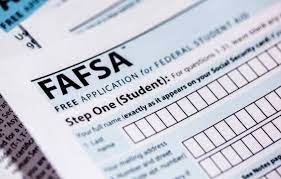The Free Application for Federal Student Aid (FAFSA) has long been considered one of most confusing and frustrating governmental forms, a 108-question gantlet of information on finances and family for students trying to pay for college. But for around 18% of FAFSA filers, the burden is even worse.
These students are selected for verification, a process in which aid applicants have to provide additional documentation, which can include tax returns, wage statements, and high school diplomas, to each institution to which they’re applying, as a way of proving that their FAFSA information is accurate.
“We’re talking about students who have already gone through a bunch of steps and feel like they’ve done what they need to do to prepare for college,” said Dr. Oded Gurantz, an assistant professor at the University of Colorado Boulder School of Education. “It’s a surprise for many students. It raises a lot of anxiety and fear because it’s much less publicized.”
Although the specifics of how students are selected for verification by the Department of Education are secret, research has shown that low-income and ethnic minority students are more likely to be picked. Previous studies have indicated that students chosen for verification were 2-6% less likely to immediately enroll in college, in line with a substantial literature showing that the higher the administrative burden of a program, the less likely it is that people will get its benefits.
However, a new paper on FAFSA verification, from Gurantz and Yung-Yu Tsai, a doctoral candidate at the University of Missouri Harry S. Truman School of Government and Public Affairs, has come up with a counterintuitive result: for the students in their sample, being selected for verification did not lower the likelihood of college attendance in either the short-term or the long-term. However, the researchers also found that verification had little impact on who received aid and how much, calling the necessity of the process into question.
Gurantz and Tsai analyzed over 460,000 first-time FAFSA submissions from Pell-eligible dependent students, those who were likely least familiar with the application and verification process. The records came from California. The researchers used machine learning to compare demographically similar students and analyzed the college enrollment of those who were and weren’t subject to verification. While previous studies used proxies for family income data like the median income from a student’s census tract or the questionnaire administered as part of the ACT, this research used actual information from FAFSA filings, giving it an advantage.
“They take a more robust analytic strategy,” said Dr. Alberto Guzman-Alvarez, a data scientist with the American Institutes of Research who has studied verification. “It’s an immaculately well-done study.”




















